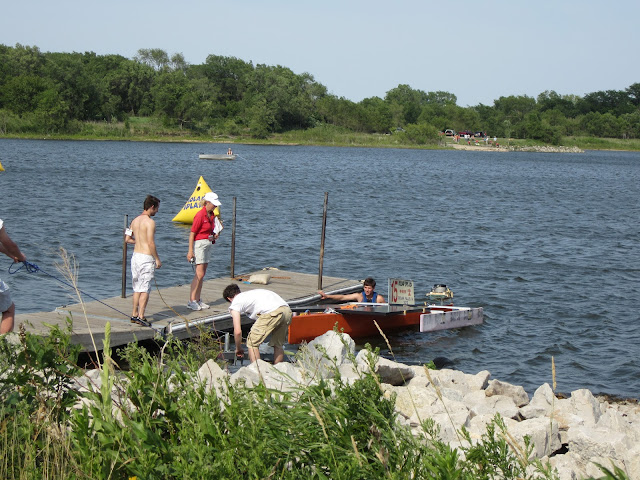After taking a detour in Cincinnati to pick up a CMSS team
member, we made it to Cedar Falls, Iowa in a rental vehicle late Monday night,
ready to start the competition the following morning.
On Tuesday we finished modifying the propulsion system to
hold the electric motors the further above the water and also added pontoons to
increase stability.
The modification to
the propulsion system limited us to attaching one Etek motor, which will be
used in both the endurance and sprint events. The pontoons allow the boat to safety operate in windy
conditions at the lake where the 2012 Solar Splash competition is being held (in Cedar Falls, Iowa) while also adding a minimal amount of drag.
On Wednesday, the team passed the electrical and mechanical
inspections and competed in the maneuverability qualifying event. Driven by Nate, the boat completed a test demonstrating the basic maneuverability of the boat.
Testing at the lake before the competition.
Nate is pulling the boat over to the launch area.
Launching the boat into the water.
Jon is holding the boat in place despite the wind while it is being inspected.
Nate is in the boat ready to do the maneuverability test.























